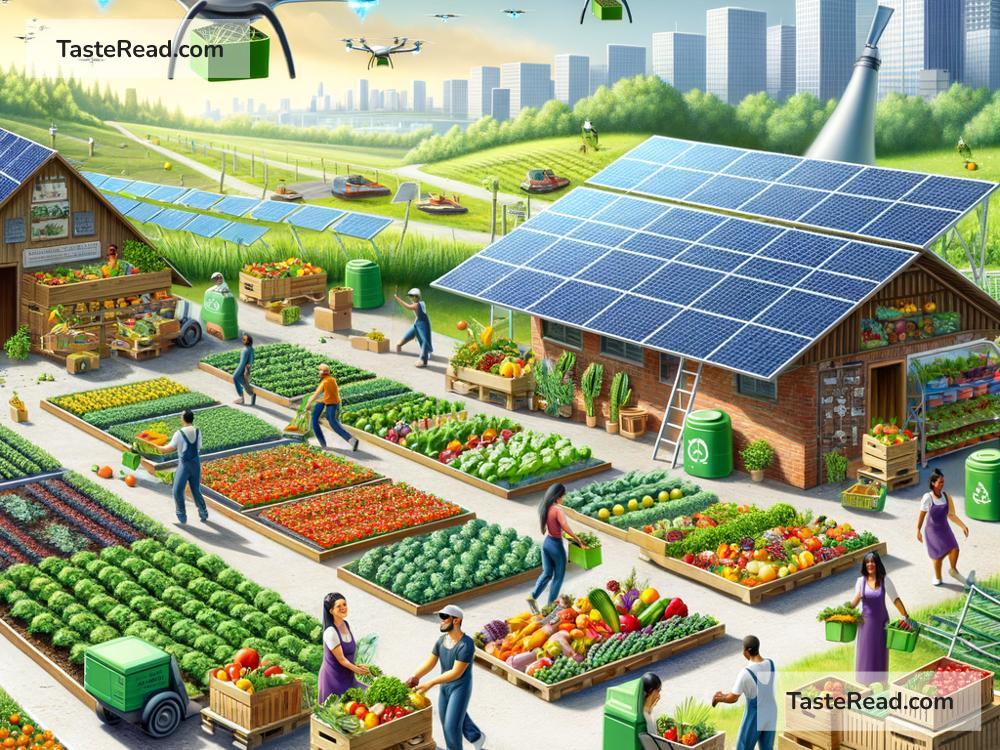The Future of Community-Supported Agriculture (CSA): A Fresh Look at Local Farming
Community-supported agriculture, or CSA, is a way for people to buy fresh, local food directly from farmers. It’s simple: customers pay farmers ahead of time, and in return, they receive a weekly share of fruits, vegetables, and other farm products. CSA started decades ago as a way to connect communities with small-scale farms, but today it’s growing in new and exciting ways. As we look to the future, CSA has the potential to play an even bigger role in how we eat and care for the planet.
Why CSA Matters Today
In recent years, people have become more interested in where their food comes from. Many of us want food that’s fresh, healthy, and grown in ways that protect the environment. CSA offers all of this. By supporting a local farmer, customers help reduce the need for long-distance shipping and large industrial farming. This means fewer greenhouse gas emissions, less packaging waste, and better chances for small farms to thrive.
At the heart of CSA is community. By joining a CSA program, people don’t just get groceries—they build relationships with local farmers, connect with neighbors, and support the local economy. This sense of community is especially important in today’s fast-paced world, where many people feel disconnected from those around them.
Challenges CSA Faces
While CSA programs are great for farmers and customers, they also face challenges. One issue is convenience. Many people are used to shopping at large grocery stores, where they can find anything they want, any time of the year. CSA works differently—customers pay upfront for seasonal produce, and they don’t get to choose exactly what they’ll receive. For some, this unpredictability can be frustrating.
Another challenge is cost. CSA shares often require a larger upfront payment, which can be difficult for families on a tight budget. While CSA may save money in the long run and provide high-quality food, some people prefer the flexibility of buying groceries as needed.
Farmers also face struggles. Running a CSA program requires time, careful planning, and good communication with customers. Bad weather, pests, or other problems can affect crops, leaving farmers worried about delivering on their promises.
The Future of CSA: What’s Next?
Despite these challenges, the future of CSA looks bright! Farmers and communities are finding creative solutions to make CSA more convenient, affordable, and accessible. Here are some trends we might see in the years ahead:
1. Technology and Online Platforms
Many CSAs are turning to technology to improve the customer experience. Online platforms allow people to sign up, pay, and customize their shares with a few clicks. Apps and websites can provide recipes, storage tips, and updates from the farm. Some CSAs are even offering delivery services, making it easier for busy families to enjoy fresh produce without extra trips.
2. Flexible Options
To attract more customers, farmers are introducing flexible CSA models. For example, some programs let members choose the types of produce they want each week. Others offer smaller shares or the option to pay in installments instead of one lump sum. These changes make CSA more appealing to people with different preferences and budgets.
3. Diversity in Products
Traditionally, CSA focused on fruits and vegetables. Now, many are offering a wider range of products, such as eggs, dairy, honey, meat, bread, and even flowers. By including these items, CSAs can reach a broader audience and provide almost everything a family needs for weekly meals.
4. Educational Partnerships
In the future, CSAs may focus even more on education. Workshops, farm tours, and cooking classes can help members learn about sustainable farming and how to use their food creatively. Schools, community centers, and local organizations may partner with CSAs to teach younger generations about the importance of fresh, locally grown food.
5. Urban Farming and CSA
As cities grow, urban farming is becoming more popular. Rooftop gardens, vertical farms, and small plots are popping up in urban areas. Some of these urban farms are starting CSA programs to bring fresh produce to city dwellers. This helps make local food accessible to people who live far from rural farms.
6. Focus on Equity
In the future, there will likely be more efforts to make CSA affordable for everyone. Some programs already accept food assistance benefits, offer sliding-scale pricing, or provide subsidized shares for low-income families. These innovations help ensure everyone can enjoy healthy, local food, no matter their income level.
Why CSA is More Than Just Food
Looking ahead, CSA is about more than just food—it’s about creating healthier communities. As the effects of climate change and global food insecurity become more apparent, local farming will play a crucial role in building resilient food systems. CSA helps farmers grow food in sustainable ways, and it gives people direct access to fresh, nutrient-rich options. Strong CSA programs also promote trust and cooperation between farmers and customers, which strengthens local economies and reduces reliance on industrial agriculture.
Get Involved!
The future of CSA depends on all of us! Whether you’re a farmer looking to start a CSA program, a customer interested in joining, or a community leader hoping to support local agriculture, there are ways to get involved. By working together, we can help CSA grow, adapt, and continue to provide real benefits to farms, families, and the planet.
Community-supported agriculture is not just a trend—it’s a movement toward a healthier, more sustainable future. As technology advances, cities expand, and more people seek meaningful connections with their food, CSA will remain an essential part of creating stronger communities and supporting local farmers. The future is bright—and it’s fresh, green, and full of possibilities!


